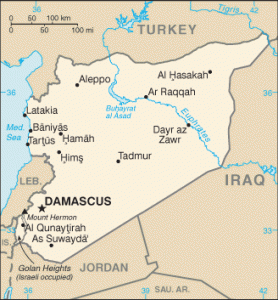Russia on Friday rejected renewed calls to set up safe zones and no-fly zones in Syria’s border areas after the United States said it was ready to begin talks to consider the move.
 “You have to solve citizen security issues using methods put in practice by international humanitarian law,” Foreign Minister Sergei Lavrov said, skeptical that the move would give the US and its allies an opportunity to intervene militarily in Syria.
“You have to solve citizen security issues using methods put in practice by international humanitarian law,” Foreign Minister Sergei Lavrov said, skeptical that the move would give the US and its allies an opportunity to intervene militarily in Syria.
“But if you try to create no-fly zones and safety zones for military purposes by citing an international crisis — this is unacceptable,” he said.
So-called safe zones are simply not a viable option. “Humanitarian corridors,” explained Marc Lynch of George Washington University in testimony before a House Foreign Affairs subcommittee, ”would be extremely difficult to protect, and could create a new refugee crisis if desperate civilians rush into designated safe zones or neighboring countries.”
Safe areas might also require airpower in some form, but Assad’s “anti-aircraft capabilities are located in or near urban areas, which means that significant civilian casualties could result from any attempt to eliminate them.” Lynch said. ”Creating and protecting a safe area in Syria would therefore require a significant and lengthy investment of troops and resources, and would not likely hasten Assad’s collapse.”
Secretary of State Hillary Clinton said the US is working with Turkey and may be preparing to “to have a very intensive operational planning” discussions during which they could deliberate further moves, possibly no-fly zones. Although couched in language of humanitarian intervention, such a move would end up facilitating an all-out war in Syria to cripple the Assad government.


